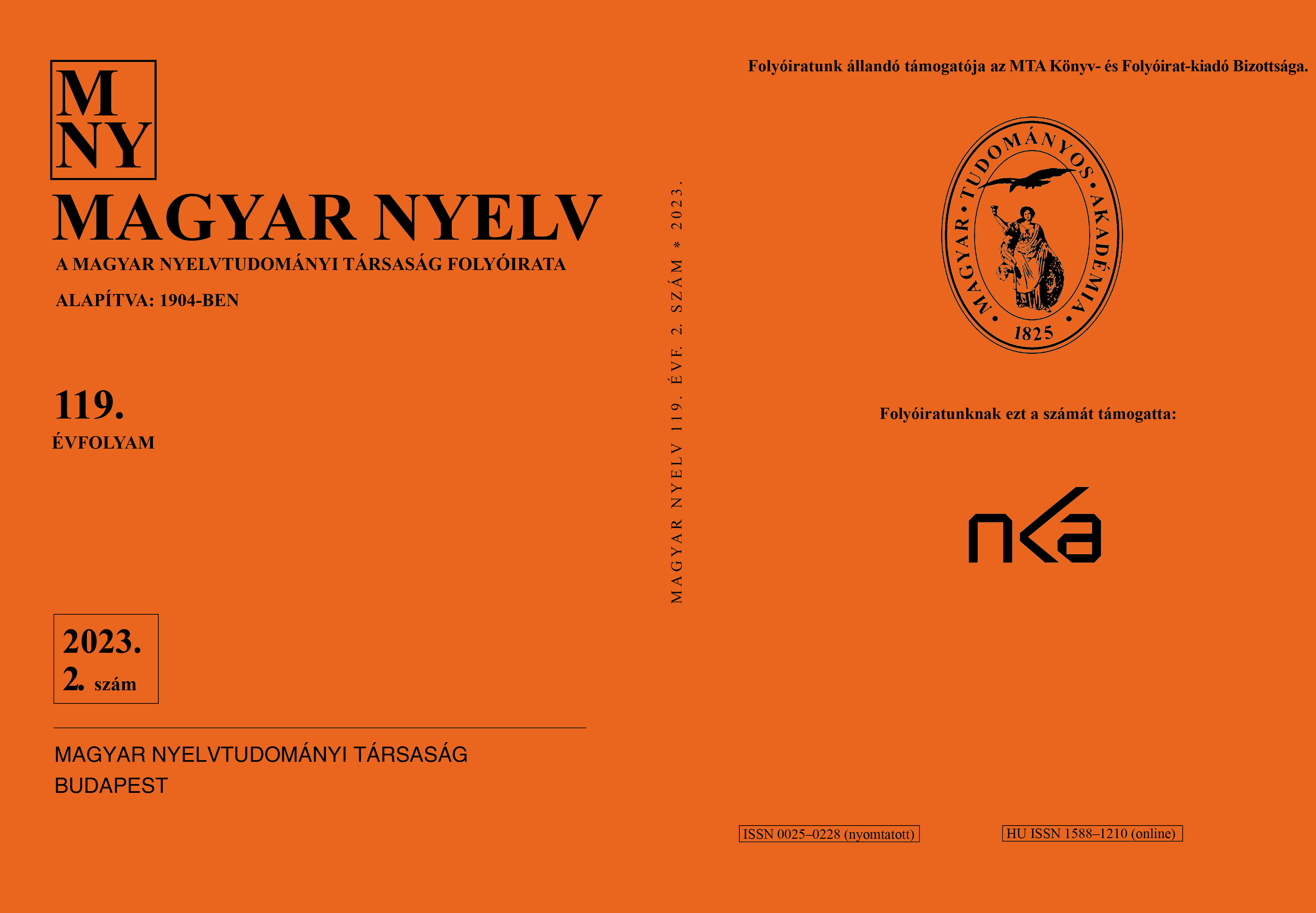Old and new etymologies
DOI:
https://doi.org/10.18349/MagyarNyelv.2023.2.205Keywords:
etymology, semantics, historical dialectology, codices, Ancient Hungarian, Old HungarianAbstract
In this paper I have added further explanations to three of my earlier etymological ideas and provided data for the history of two additional words. To the etymology of Hungarian bagoly ’owl’ a foreign language pattern may be a parallel, both based on onomatopoeia. Old toponyms based on orom, oromzat and orozat (all roughly: ‘gable, embattlement, frontispiece’), derived from the word orr ‘nose’, suggest that they are not synonymous in all variants. Behind the Ancient Hungarian dignitary name gyula, there may be a phenomenon that can be considered universal: (military or religious) power was experienced both by the holder and by other people in the form of heat and light. Although búsz ‘mist, steam, cloudy sky’ and buz ‘intense emotion’ are two words of similar form and meaning, and therefore may have been confused in the minds of speakers, I consider them to be two separate words because of their meanings provided in old codices.
Downloads
Published
Issue
Section
License
Copyright (c) 2023 Dániel Németh

This work is licensed under a Creative Commons Attribution-NonCommercial-NoDerivatives 4.0 International License.
Magyar Nyelv is a Diamond Open Access periodical. Documents can be freely downloaded and duplicated in an electronic format, and can be used unchanged and with due reference to the original source. Such use must not serve commercial purposes. In the case of any form of dissemination and use, Hungarian Copyright Act LXXVI/1999 and related laws are to be observed. The electronic version of the journal is subject to the regulations of CC BY-NC-ND (Creative Commons – Attribution-NonCommercial-NoDerivatives).
The journal permits its authors, at no cost and without any temporal limitation, to make pre-print copies of their manuscripts publicly available via email or in their own homepage or that of their institution, or in either closed or free-for-all repositories of their institutions/universities, or other non-profit websites, in the form accepted by the journal editor for publication and even containing amendments on the basis of reviewers’ comments. When the authors publicize their papers in this manner, they have to warn their readers that the manuscript at hand is not the final published version of the work. Once the paper has been published in a printed or online form, the authors are allowed (and advised) to use that (post-print) version for the above purposes. In that case, they have to indicate the exact location and other data of the journal publication. The authors retain the copyright of their papers; however, in the case of an occasional secondary publication, the bibliographical data of the first publication have to be included.



